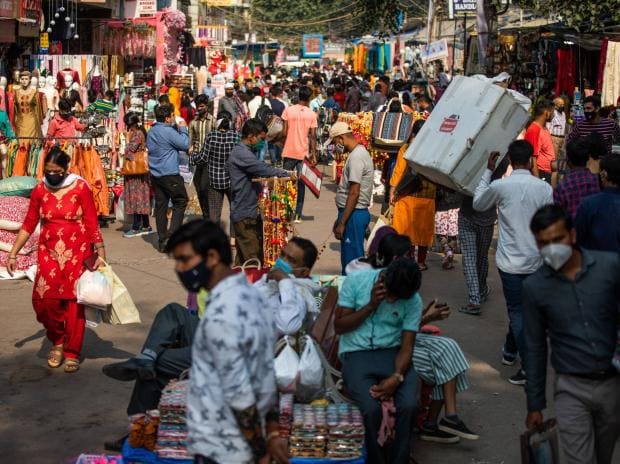On November 15, the world’s population will surpass the 8 billion mark. India will be the second most populous country in the world, only behind China. However, within the next six months, India will cross China to become the country with the highest population. According to the 2022 Revision of World Population Prospects by the United Nations (UN), on July 1, 2023, India will have 1.428 billion people. China, on the other hand, will have 1.425 billion people.
However, India’s total fertility rate (TFR) currently stands at 2. This is below the ideal replacement rate of 2.1. In other words, fewer Indians are being born than required to maintain the current population growth level. According to the UN, in 2023, the TFR will fall below 2. The world’s TFR, on the other hand, stands at 2.31.
Currently, the highest number of Indians falls in the age group of 20 and 24, according to the Population Projection Report released in 2020 by the Ministry of Health and Family Welfare. In 2026, the age group of 25 and 29 will have the highest number of people. In 2036, India’s largest population group will be in their late 30s. India would need to invest more in human capital to enjoy the demographic dividend, especially in education.
“Human capital investment is still much lower in India than in many countries of the world. Just having a young population does not ensure a demographic dividend. The population has to be skilled and get a platform to work. Indian youngsters are highly talented even in a challenging situations. Quality education with some incentives can do wonders,” Nandita Saikia, professor in Public Health and Mortality Studies at the International Institute for Population Sciences (IIPS), told Business Standard.
“For India to leverage the demographic dividend and achieve sustainable social and economic development, we will have to urgently and greatly step up investments into the health, nutrition, education, vocational training, skills and employability of the working age population, in addition to ensuring appropriate labour and migration policies and good governance,” Poonam Muttreja, executive director of Population Foundation of India said.
“Secondly, the New Education Policy (NEP 2020) should be executed meticulously as it has a lot of scope on maximising Indian talent,” Saikia said.
“In order to leverage the demographic dividend, the country will have to place adolescents and youths at the center of its policies, investments and programmes and align them with the demographic shifts in the states. The evidence shows that demographic dividend significantly contributed to the economic growth in China, Korea and Japan as these countries invested in health, education and capacity-building of the young population,” Muttreja added.
ALSO READ: Indian cities will need $840 bn investment over 15 years: World Bank
After 40 years, in 2063, India will touch the peak of its population at 1.69 billion. However, the world’s peak will be achieved in 2086 at 10.4 billion.
Besides education, India would also need to focus on healthcare as the country’s life expectancy at 67.7 is still lower than the global average of 71.7. The life expectancy of women is higher than that of men.
“Indian men, particularly young adults, experience high mortality due to injuries and accidental deaths. This needs particular intervention to minimise road traffic deaths. Further, cardiovascular disease-related deaths and cancer deaths are higher among Indian adults,” Saikia said.
A better piece of advice is to adopt a healthy lifestyle.
Note:- (Not all news on the site expresses the point of view of the site, but we transmit this news automatically and translate it through programmatic technology on the site and not from a human editor. The content is auto-generated from a syndicated feed.))



